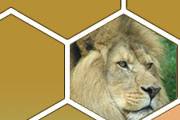
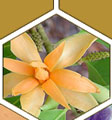
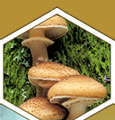

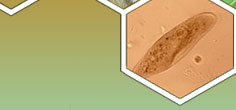

   |
 |
  |
|
Descriptions |
Genera |
|
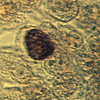 |
Chlamydias
Campbell p.543 They are parasites and may only survive within animal cells. They lack the ability to produce ATP and derive this requirement from their hosts. Their gram-negative walls are unique by lacking any peptidoglycan. Chlamydia trachomatis is the cause for the common sexually transmitted disease. |
Chlamydia |
 |
Cyanobacteria
(blue-green bacteria and chloroxybacteria, grass green) Campbell p.537 Until less than two decades ago, cyanobacteria were called blue-green algae or cyanophyta and were considered plants.They are considered as one of the ultimate producers along with algae and plants to feed and energize all other lifeforms. |
Chamaesiphon Nostoc Prochlorothrix |
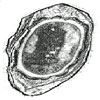 |
Gram
Positive Bacteria (endospore-forming) Campbell p.535, 543 Endospora comprise thousands of strains distributed in a multitude of habitats all over the world. Growing cells are rod or sphere shaped, as a rule, and their spores either elliptical or spherical. They rival the gram-negative bacteria in diversity. Their cell walls contain a high amount of peptidoglycan, which appears dark blue or violet by gram staining. |
Clostridium Peptococcus Sporosarcina |
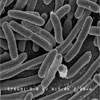 |
Proteobacteria
(gram-negative bacteria) Campbell p.542 They are facultative aerobes, capable of growing with or without the presence of oxygen. Morphologically, these organisms range from solitary, simple unicells, on the one hand, to several classes of complex morphological types, such as stalked, budding, and aggregated bacteria, on the other. Many members of the phylum are chemoheterotrophic; that is, they require reduced organic compounds both for energy and for growth. |
|
 |
Proteobacteria
- Alpha Campbell p.542 The existence of mitochondria in eukaryotic cells are thought to have originated with this alpha group, known as the endosymbiotic theory. Many species in this group are closely associated with eukaryotic hosts, such as the symbiont genus Rhizobium living within the roots of plants. |
Agrobacterium Azospirillum Rhizobium |
 |
Proteobacteria
- Beta Campbell p.542 Many beta bacteria are found in the environmental samples such as water and soil. They play important roles in the environment through degradation and recycling, genus Nitrosomonas recycles nitrogen by oxidizing ammonium. A few genera are pathogens to humans. |
Bordetella Nitrosomonas Sphaerotilus |
 |
Proteobacteria
- Gamma Campbell p.542 A large number of important pathogens are included in this branch: Legionella causes Legionnaires' disease, Salmonella causes typhoid fever and food poisoning. |
Chromatium Legionella Salmonella |
 |
Proteobacteria
- Delta Campbell p.542 This branch consists of predominantly aerobic bacteria, and some strictly anaerobic. The genus Bdellovibrio preys upon other bacteria and genus Desulfovibrio (Desulfo-) is a sulfur-reducing bacterium. |
Bdellovibrio
Chondromyces Desulfovibrio |
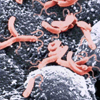 |
Proteobacteria
- Epsilon Campbell p.542 Most Epsilon are pathogenic to humans inhibiting in the digestive tracts. |
Campylobacter Helicobacter |
 |
Spirochetes
Campbell p.543 Spirochetes look like tightly coiled snakes. They are specially equipped with 2 to 200 internal flagella (axial filaments or endoflagella) in the space between the inner (plasma) membrane and the outer cell membrane of the Gram-negative cell wall; that is, the flagella are in the cell wall. |
Borrelia Leptospira Treponema |